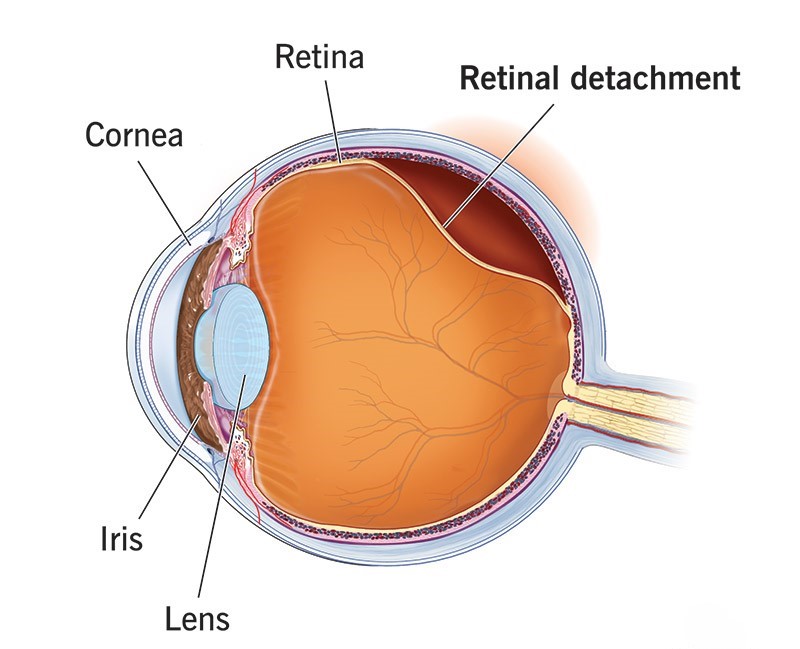Retinal Detachment
What is Retinal Detachment?
Retinal detachment is separation of the neurosensory retina from the underlying retinal pigment epithelium.

Retinal detachment is separation of the neurosensory retina from the underlying retinal pigment epithelium.

Some of the many retinal detachment symptoms are mentioned below:
Retinal Detachment. Risk factors include the following:
Tractional can be caused by vitreoretinal traction due to preretinal fibrous membranes, as may occur in proliferative diabetic or sickle cell retinopathy.
Serous Detachment results from the transudation of fluid into the Subretinal space. Causes include severe uveitis, especially in Vogt-Koyanagi-Harada disease, choroidal hemangiomas, and primary or metastatic choroidal cancers
Here are some of the many risk factors of retinal detachment:
The average cost for retinal detachment surgery in India is around Rs. 1,10,000. When it comes to health, it is always a good idea to invest in a good insurance plan that ensures that you do not have to go through a financial crunch in a time of need. On the other hand, there are several hospitals which will also allow you to pay the amount in installments according to your ease and convenience. Check the official website of Dr Agarwal’s Eye Hospital to know more about retinal detachment surgery.
A scleral buckle is a type of retinal detachment surgery where the surgeon fixes a flexible, tiny band around the white area of the patient’s eye called the sclera. The role of this band is to gently push the sides of the eye while slowly moving it towards the retina to help the retina get reattached. Once this retinal detachment surgery is successful, the band will remain in the eye permanently to ensure there are no problems in the future.
After this retinal detachment surgery, most people are allowed to go home on the same day. However, they are asked to keep some pointers in mind like:
Also known as serous retinal detachment, exudative retinal detachment refers to a medical condition where fluid is collected behind the retina of the patient’s eye even though there are no tears or breaks in the retina.
In this case, if a huge amount of fluid gets filled up, it can automatically push the retina away and cause detachment. Coats disease, trauma/injury to the eye, inflammation inside the eye, and age-related muscular degeneration (AMD) are some of the many causes of serous retinal detachment.
Usually, in most cases, retinal detachment surgery is required to treat this eye condition. It is imperative to understand that retinal detachment is an eye emergency that must be treated as soon as possible.
The retina of the eye is similar to the film integrated into a camera. Therefore, in order to get a clear and accurate picture, it has to be smooth and healthy. In the surgery, the surgeon makes use of several medical tools and devices to ensure that the retina is fixed back in its place without causing any problems in the future.